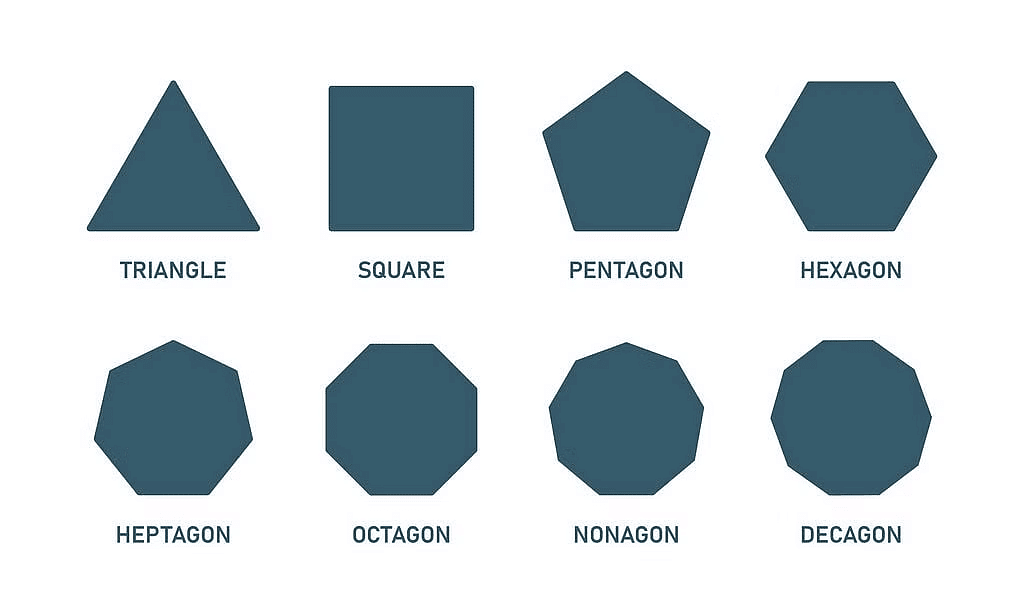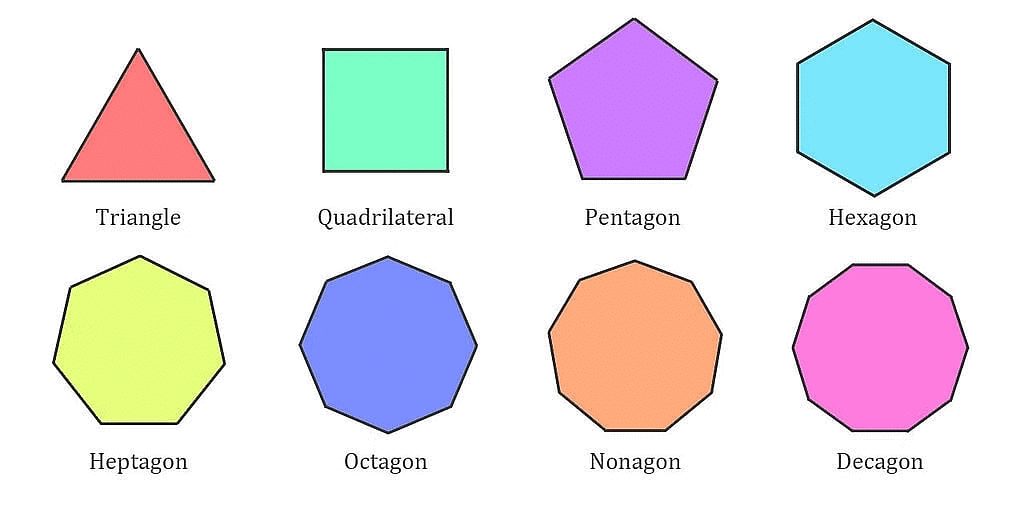Year 4 Exam > Year 4 Notes > Year 4 Mathematics > How to identify different 2D shapes
How to identify different 2D shapes | Year 4 Mathematics PDF Download
What are 2D shapes?
- 2D shapes are ubiquitous elements in our surroundings, appearing in various forms.
- For instance, windows commonly exhibit a rectangular shape, while clocks typically feature a circular design.
- These shapes are flat and possess distinct characteristics.
Properties of 2D Shapes
A property of a shape refers to a specific quality it possesses. These properties help us distinguish one shape from another. Some essential properties of 2D shapes include:
- Number of sides
- Number of vertices (corners)
- Length of sides
- Types of angles (acute, obtuse, right-angle)
- Presence of perpendicular and parallel lines
Let's examine the properties of three common 2D shapes - a triangle, a square, and a hexagon etc.:
Triangles

- All triangles consist of 3 sides and 3 angles.
- The sum of their internal angles always equals 180°.
- However, various types of triangles exist based on their properties, which include:
- Isosceles
- Equilateral
- Scalene
- Right-angled
Quadrilaterals
A quadrilateral is defined as a shape with 4 sides and 4 angles. Some examples of quadrilaterals along with their properties are:

Rectangle
- 2 pairs of equal sides.
- Angles all right-angles (perpendicular lines).
- 2 pairs of parallel lines.
Square
- A special type of rectangle.
- Sides all have equal length.
- Angles are all right-angles (perpendicular lines).
- 2 pairs of parallel lines.
Trapezium
- 1 pair of parallel lines.
- 2 sets of equal angles.
- 2 lines equal length and 2 that aren’t.
Kite
- 2 pairs of equal sides.
- 1 pair of equal angles.
- No parallel lines.
Regular Polygons

Regular polygons are shapes with all sides and angles equal. Let's explore some common examples:
Pentagon
- A pentagon has five equal sides and angles.
Hexagon
- A hexagon has six equal sides and angles, with three pairs of parallel lines.
Heptagon
- A heptagon features seven equal sides and angles.
Octagon
- An octagon consists of eight equal sides and angles, with four pairs of parallel lines.
Irregular Polygons

- Definition: Irregular polygons are shapes with sides and angles of varying sizes.
- Identification: Each polygon can be recognized by the number of sides it possesses. For instance, a pentagon always has 5 sides.
- Example:
- This irregular pentagon features sides and angles of different lengths and sizes.
- It includes two right angles and a pair of equal sides, while the other three sides have varying lengths.
Question for How to identify different 2D shapesTry yourself: Which shape has three equal sides and three equal angles?View Solution
The document How to identify different 2D shapes | Year 4 Mathematics is a part of the Year 4 Course Year 4 Mathematics.
All you need of Year 4 at this link: Year 4
|
69 videos|70 docs|11 tests
|

|
Explore Courses for Year 4 exam
|

|
Signup for Free!
Signup to see your scores go up within 7 days! Learn & Practice with 1000+ FREE Notes, Videos & Tests.
Related Searches
















